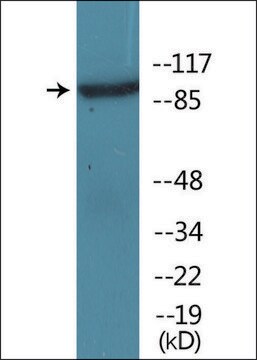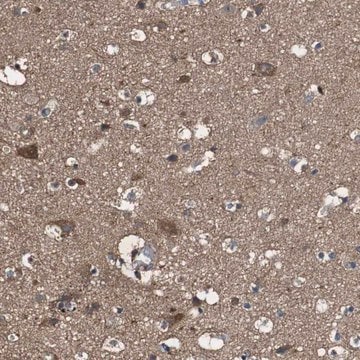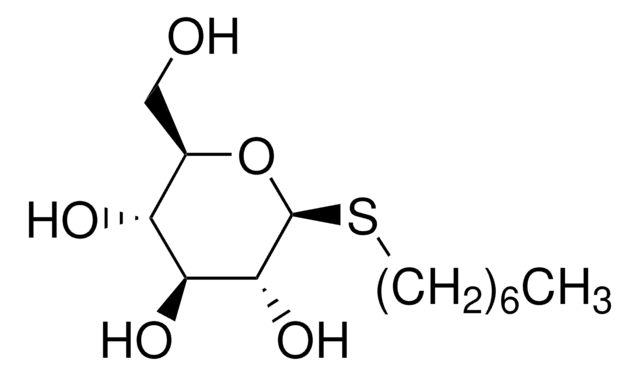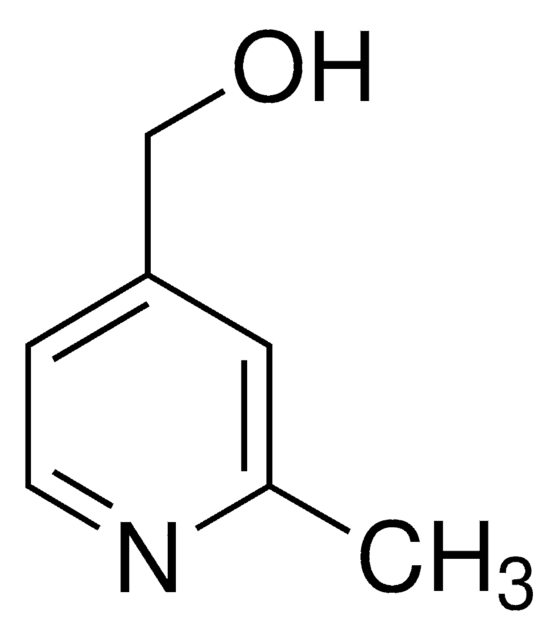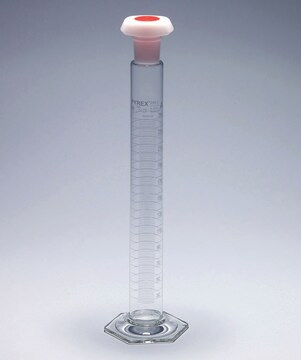추천 제품
생물학적 소스
mouse
Quality Level
항체 형태
purified antibody
항체 생산 유형
primary antibodies
클론
9H3.1, monoclonal
종 반응성
human
기술
immunohistochemistry: suitable (paraffin)
western blot: suitable
동형
IgG2aκ
NCBI 수납 번호
UniProt 수납 번호
배송 상태
ambient
타겟 번역 후 변형
unmodified
유전자 정보
human ... PTPRS(5802)
일반 설명
Receptor-type tyrosine-protein phosphatase S (UniProt: Q13332; EC: 3.1.3.48, R-PTP-S, Receptor-type tyrosine-protein phosphatase sigma, R-PTP-sigma) is encoded by the PTPRS gene (Gene ID: 5802) in human. R-PTP-S is a single-pass type I membrane protein that belongs to the protein-tyrosine phosphatase family. Seven isoforms of R-PTP-S have been described that are produced by alternative splicing. R-PTP-S is detected in all tissues except plasma and liver. It is also detected in peripheral blood plasmacytoid dendritic cells. It is synthesized with a signal peptide (aa 1-29), which is subsequently cleaved off. The mature protein has an extracellular domain (aa 30-1282), a transmembrane domain (aa 1283-1303), and a cytoplasmic domain (aa 1304-1948). A cleavage is reported to occur between amino acids 1197-1198, which separates the extracellular domain from the transmembrane segment by a process known as ectodomain shedding. This process is involved in receptor desensitization, signal transduction and/or membrane localization. R-PTP-S serves as a cell surface receptor that binds to glycosaminoglycans, including chondroitin sulfate proteoglycans and heparan sulfate proteoglycan. Binding to chondroitin sulfate and heparan sulfate proteoglycans has opposite effects on R-PTP-S oligomerization and regulation of neurite outgrowth. It contributes to the inhibition of neurite and axonal outgrowth by chondroitin sulfate proteoglycans and plays a role in stimulating neurite outgrowth in response to the heparan sulfate proteoglycan GPC2. R-PTP-S is shown to be essential for normal brain development, especially for development of the pituitary gland and the olfactory bulb. It is reported to be rapidly internalized when dendritic cells are stimulated with the TLR9 ligand cytidine-phosphate-guanosine (CpG).
특이성
Clone 9H3.1 detects Receptor-type tyrosine-protein phosphatase S (R-PTP-S) in human cells. It targets an epitope within 96 amino acids from the internal region.
면역원
GST/His-tagged recombinant fragment corresponding to 96 amino acids from the internal region of human Receptor-type tyrosine-protein phosphatase S (R-PTP-S). The immunogen sequence is conserved in all isoforms.
애플리케이션
Anti-PTPRS, Clone 9H3.1, Cat. No. MABS1824, is a mouse monoclonal antibody that detects Receptor-type tyrosine-protein phosphatase S and had been tested for use in Immunohistochemistry (Paraffin) and Western Blotting.
Immunohistochemistry Analysis: A 1:1,000-2,000 dilution from a representative lot detected PTPRS in human tonsil, human lung, and human cervical cancer tissue sections.
Research Category
Signaling
Signaling
품질
Evaluated by Western Blotting in SH-SY5Y cell lysate.
Western Blotting Analysis: 0.5 µg/mL of this antibody detected PTPRS in 10 µg of SH-SY5Y cell lysate.
Western Blotting Analysis: 0.5 µg/mL of this antibody detected PTPRS in 10 µg of SH-SY5Y cell lysate.
표적 설명
~220 kDa observed; 217.04 kDa calculated. Uncharacterized bands may be observed in some lysate(s).
물리적 형태
Format: Purified
Protein G purified
Purified mouse monoclonal antibody IgG2a in buffer containing 0.1 M Tris-Glycine (pH 7.4), 150 mM NaCl with 0.05% sodium azide.
저장 및 안정성
Stable for 1 year at 2-8°C from date of receipt.
기타 정보
Concentration: Please refer to lot specific datasheet.
면책조항
Unless otherwise stated in our catalog or other company documentation accompanying the product(s), our products are intended for research use only and are not to be used for any other purpose, which includes but is not limited to, unauthorized commercial uses, in vitro diagnostic uses, ex vivo or in vivo therapeutic uses or any type of consumption or application to humans or animals.
Not finding the right product?
Try our 제품 선택기 도구.
Storage Class Code
12 - Non Combustible Liquids
WGK
WGK 1
시험 성적서(COA)
제품의 로트/배치 번호를 입력하여 시험 성적서(COA)을 검색하십시오. 로트 및 배치 번호는 제품 라벨에 있는 ‘로트’ 또는 ‘배치’라는 용어 뒤에서 찾을 수 있습니다.
자사의 과학자팀은 생명 과학, 재료 과학, 화학 합성, 크로마토그래피, 분석 및 기타 많은 영역을 포함한 모든 과학 분야에 경험이 있습니다..
고객지원팀으로 연락바랍니다.